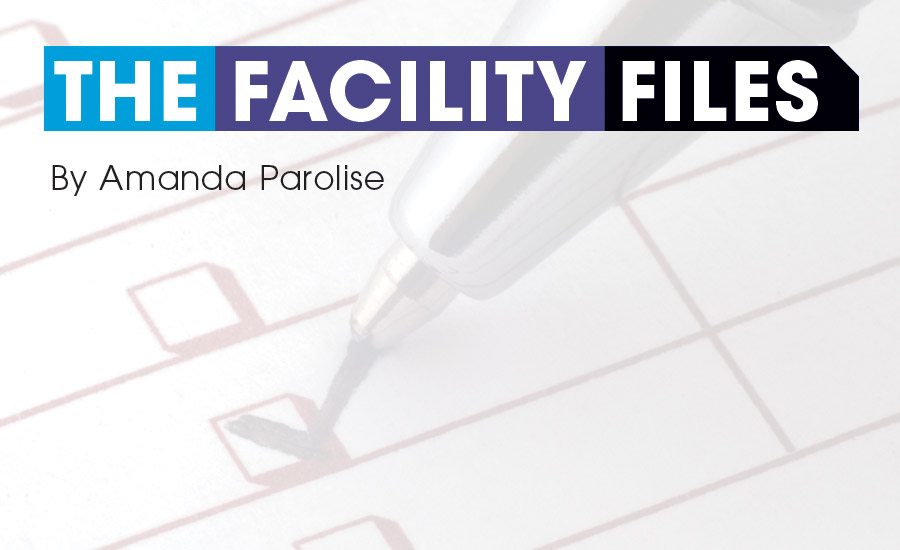This month’s Facility File will focus on the B2B March test for the retrofit of a 1960s, 250,000-sq-ft hospital conversion to apartments changing out the high-pressure steam boilers to hot water boiler modules. The existing system had a pressure reducing station taking the steam from high pressure to medium pressure down to low-pressure steam that served multiple steam-to-hot-water heat exchangers, which in turn served the building heating system.
The scope of this building program is to remove the antiquated high-pressure steam boilers, steam piping, condensate return piping, pressure-reducing stations, deaerator set, and condensate pump sets. The energy retrofit portion of the building program is to furnish and install a series of high-efficiency, hot water condensing boilers and remove the steam-to-hot water heat exchanger installations.
It would be very beneficial for the facility manager and her staff to read chapter 1 (Residences) in the 2015 ASHRAE Handbook — HVAC Applications to be knowledgeable of ASHRAE’s latest guidelines, along with chapter 32 (Boilers) in the 2016 Handbook when preparing for the condenser boiler replacements. The owner’s facility management group should also read chapters 36 through 43 of the 2015 Handbook along with reading chapter 59 (HVAC Security) to familiarize herself and her staff with building operation and management. This information combined with the facility staff’s knowledge of operating a hot water heating system will assist the design team in understanding intricacies of owning, operating, and managing this energy retrofit.
With all these design guidelines from ASHRAE, the HVAC design engineer/project manager should meet with the owner’s O&M staff to discuss specific building standards that need to be applied to this project. In particular, the facility manager should review with the design team the needs to adjust their standard contract specifications pertaining to O&M, training, preventive maintenance workorder system, and energy operating budget.
In the design phase of the project, the facility manager and her O&M staff will want to contribute information to the design team’s writing of the contract specification, and more specifically, to the following areas: service contracts, parts inventory, and as-built drawings requirements. Reviewing the design documents, this O&M staff will want to be assured that equipment serviceability is adequate and safe (e.g., boiler room ventilation and gas code ventilation).
For a building program as well as a business plan to continue to successfully manage the building central hot water heating system, it is imperative that the program includes an O&M budget in addition to the program’s construction budget. The equipment life of a boiler is approximately 20 years, but it can last much longer if proactively maintained over the life of this heating plant.
For this March B2B, the project delivery method is design-bid-build (DBB), and the project design team is led by the HVAC consulting engineering firm working in partnership with an owner’s representative. The building owner has chosen to retain the consulting services of a 3rd-party commissioning (Cx) and 3rd-party testing, adjusting, and balancing (TAB) firm. In the construction phase, the O&M staff will want to revisit the issues noted earlier during the design phase. Next comes the startup and commissioning phases, and the O&M staff will want to be proactive in following along with the DBB general contractor’s mechanical-electrical coordinator and the subcontractor’s startup personnel, receiving equipment training from the boiler manufacturer’s startup technician and system training using the O&M manuals and contract drawings (that will eventually become the as-built drawings).
Once the startup has been completed and the ATC subcontractor and 3rd-party Cx and TAB consultant have completed the water balancing work, the HVAC subcontractor shall go through an automatic control system initial dry-run demonstration prior to the general contractor and his subcontractors demonstrating the system to the Cx and TAB consultant. The ATC subcontractor and the boiler manufacturer’s technician should also begin collecting system performance by trending pertinent HVAC system and equipment data as follows:
[X] outdoor air dry bulb and wet bulb temperature [X] boiler module hot water supply and return temperature [X] building heating water supply and return temperature [X] alarms and safeties [X] boiler control points
Taking the same approach as the design engineering, the owner’s O&M personnel should use a series of computer-generated touchscreen project checklists that allows her staff to confirm that the following facility files have been collected. This process should start at the start of construction and not at project closeout, so that the facility files can be inputted into a CMMS system. Touchscreen O&M checklists should include:
[X] equipment shop drawings [X] preventive maintenance tasks [X] O&M manuals, parts list, and lubricants [X] troubleshooting tips [X] seasonal change-over procedures [X] startup & shutdown instructions
The O&M staff should review the contractor-produced piping and field fabrication/field coordination drawings prior to fabrication. Touchscreen service checklists should include:
[X] location of shutoff valves, ATC valves, and balancing valves [X] strainers [X] equipment and control devices [X] access for servicing equipment.
The training process should include specific HVAC system and equipment training but also emergency plan training due to a “loss of heat” event. The water balancing of the boilers and the perimeter heating system, along with the final TAB report, should be included in the preventive maintenance workorder system to routinely assure continuous system performance. In addition, the hydraulic modeling of the entire system should be updated after the final TAB report. This will requires the 3rd-party TAB consultant to provide the water balancing reports, along with the associated system flow diagrams, noting quantities and pressures for rebalancing if necessary as part of the project closeout documents. Touchscreen training checklists should include:
[X] equipment [X] system [X] emergency plan [X] automatic controls [X] energy management


